Gain a global view of your family's past by connecting census records
4-5 minute read
By Jen Baldwin | February 16, 2022

Exploring the 1921 Census of England & Wales in combination with other national and international collections can add a new perspective to your ancestors' stories. Jen Baldwin explains how.
The 1921 Census of England & Wales is incredibly significant material for historians, family historians and genealogists. However, it's even more than that. The 1921 Census offers researchers around the world an opportunity to explore the movement, activities and occupations of English-speaking communities worldwide.
One of the best ways to use the 1921 Census to make new discoveries is by comparing it to existing materials that have been accessible for years, such as the US 1920 Census and the 1921 and 1931 Censuses of Canada.
Thanks to the way the census was taken – the details on an exact day – versus the average description of a household over a period of months, you can really capture a unique slice of information. Combine that with a period in history in which travel, tourism, and trade are changing rapidly and you have a recipe for new and enlightening family research.
Cornelius King Chapin
Cornelius King Chapin was President of a machine tool manufacturing business in Detroit, Michigan in the early 1920s. You'll find him in the 1920 US Census with his wife, Florence, and two household servants: Mary, the cook and Martha, a maid.
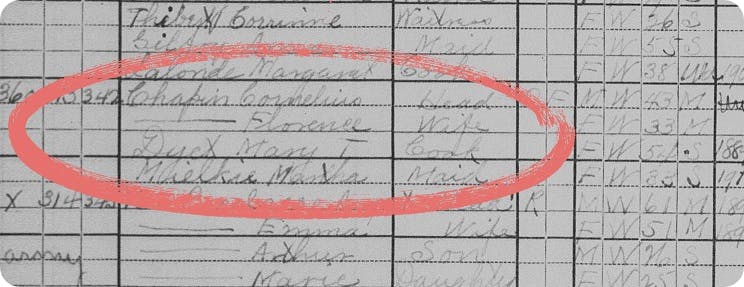
Cornelius Chapin's household in the 1920 United States Census. View the full record.
The census tells us Cornelius was born in Michigan and was 43 at the time. Both his father and mother were also born in Michigan. The census record also reveals that Cornelius was considered a 'wage earner'. Perhaps not what you'd expect for a President of a company.

The Detroit skyline, 1929.
Florence is listed at age 33 and was born in Illinois. She did not record an occupation and her parents were also both born in the same state. At the time of the census, they lived on Lincoln Road in Grosse Pointe, a suburb of metro Detroit.
Found at The Savoy
You'll also find Cornelius and Florence in the 1921 Census of England & Wales, captured staying the night at The Savoy Hotel in London.

Cornelius listed on the 1921 Census at The Savoy Hotel. View the full record.
The 1921 Census reveals something new we hadn't gleaned from the 1920 Census - a son, James A Chapin, aged just one year and four months old at the time. This makes the 1921 Census of England and Wales the first national census James appeared on in his lifetime.

Florence and baby James Chapin, enumerated on the page following Cornelius' entry. View the full record.
Thanks to the detail in the 1921 Census, we can calculate that James was born sometime around 19 February 1920. The official date of the 1920 US Census was 1 January, so Florence would have been heavily pregnant at the time it was taken. It also offers a more specific birth location for Cornelius - Lansing, Michigan. Florence's birth location is listed as Detroit, Michigan on the 1921 Census, not Illinois, as stated in the 1920 Census.
Why the discrepancy in Florence’s place of birth?
Both the 1930 US Census and her passport application repeat Illinois as the state of Florence's birth. Of course, there is no national birth registration system in the United States, so we can take advantage of state-level birth records as well as other documentary evidence to confirm the location. It is likely that the 1921 Census for The Savoy was completed using passports and other documents used as part of the hotel registration process, and since Florence’s passport was issued from Detroit, her place of birth may have been documented on the census incorrectly. This is just one theory that could be explored but seems to be the most reasonable explanation for the error.
Beyond census records
Newspapers across the state of Michigan tell us that the Chapins were no strangers to travel and visited Pittsburgh, New Orleans, LA and Pasadena within months of the 1920 Census enumeration. We can now add London to that list, and thanks to Findmypast's US Passport Applications, we can also assume that Holland, France and Belgium were part of their European journey through the summer months of 1921. The Chapins applied for their passports early in 1921. And best of all, these passport application records also provide us with precious photos of Cornelius and Florence Chapin.
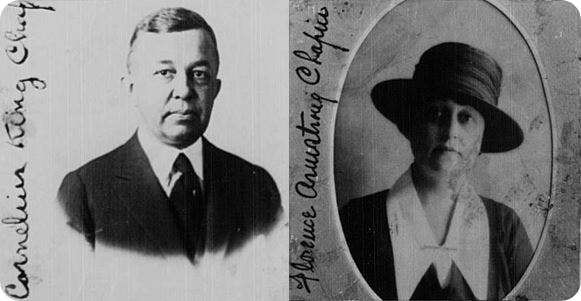
Bringing faces to names and stories to life, passport applications are fantastic sources for photos of your ancestors. View the full record.
By comparing the 1920 US Census and the 1921 Census of England & Wales, we've learned a great deal about the Chapin family of Detroit. Incorporating additional materials, such as travel and migration records and newspapers, will only build on this foundation.
Canadian connections
Turning our attention to 1931 in Canada, one particular census connection that stands out is of the Hartley family. On 10 June 1927, the Doric departed Liverpool for Canada. On board were several families identified as part of the '3000 Scheme', a joint migration plan between the governments of Canada and the United Kingdom, which ultimately facilitated the migration of over 18,000 individuals between 1924 and 1930.
The Empire Settlement Act of 1922 required that the adult male members of each family acquire local farm experience by accepting employment on farms in the vicinity of where they were assigned land before they were able to claim that land. The females of the family were expected to learn to look after cows and poultry to further benefit their own eventual farms. The final location of settlement was determined by the government of Canada, but some consideration was taken for the type of farming each family wanted to pursue and their aptitude for it.
The average cost to the settling family was anywhere from 4,000-5,000 Canadian dollars, equivalent to approximately £800 to £1000 at the time. If they did not have the cash readily available, loans were an option, to be repaid over a period of 25 years, with 5% interest.
One such family to take advantage of this program was Raymond and Margaret Hartley, and their children, Effie and Muriel. Travelling on the Doric, they had left their home at 105 Shelley Road in Preston, UK, headed for a new opportunity.
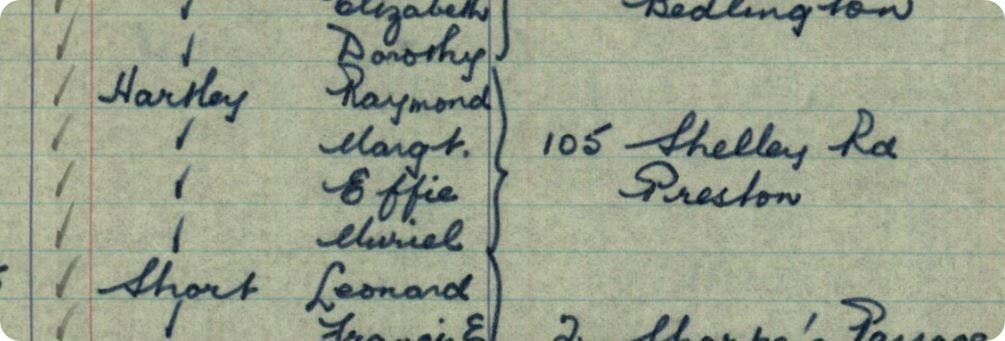
The Hartleys in our passenger lists. View the full record.
Clearly, their life in England had not been easy. Just six years earlier, in the 1921 Census, they were living as boarders in the home of Samuel Hodson and his family at 111 Shelley Road. Raymond was employed as an iron dresser for J Dewhurst & Sons Moor Brook Foundry, but Margaret was an out-of-work winder. The home they lived in had only four rooms, with a total of seven individuals living there, in two families.
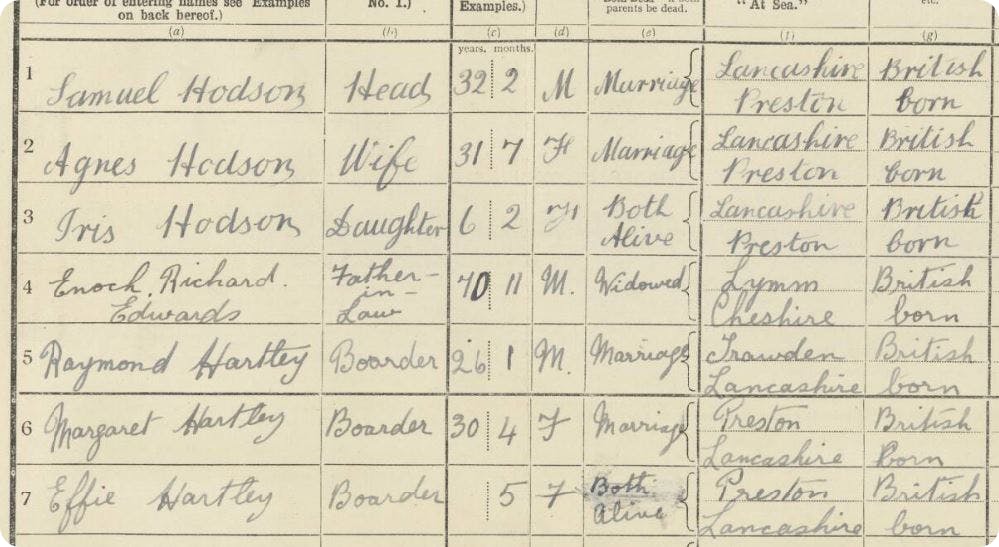
The Hartleys and Hodsons in 1921. View the full record.
By the time the 1931 Census of Canada was taken, Raymond could boast of owning his own home, valued at $500. While they didn’t have a radio, they had added to their family with another daughter, Myra Agnes. They were members of the Church of England and Raymond is classified as a general farmer. They were assigned land near Marquette, Manitoba.
From discoveries you won't find any other way to inspiring rags-to-riches stories, it's easy to see why making connections through different countries' census records is essential for any serious family historian. Try an intercontinental ancestor search for yourself - take a look at more than one national census to see what family stories could be hiding in their pages.
Related articles recommended for you
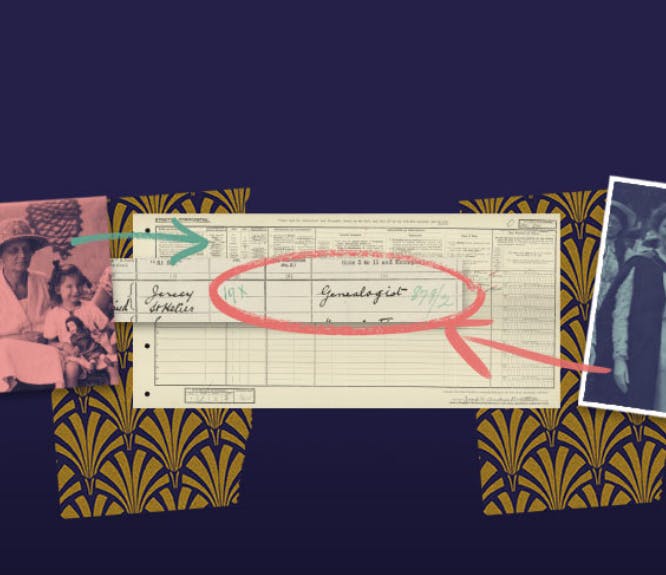
Genealogists in the 1921 Census of England and Wales: discover a profession that stands the test of time
History Hub

Everything you need to know about importing and exporting family tree GEDCOM files
Build Your Family Tree

Are you related to your partner? Find out with this brand-new feature
The Findmypast Community

